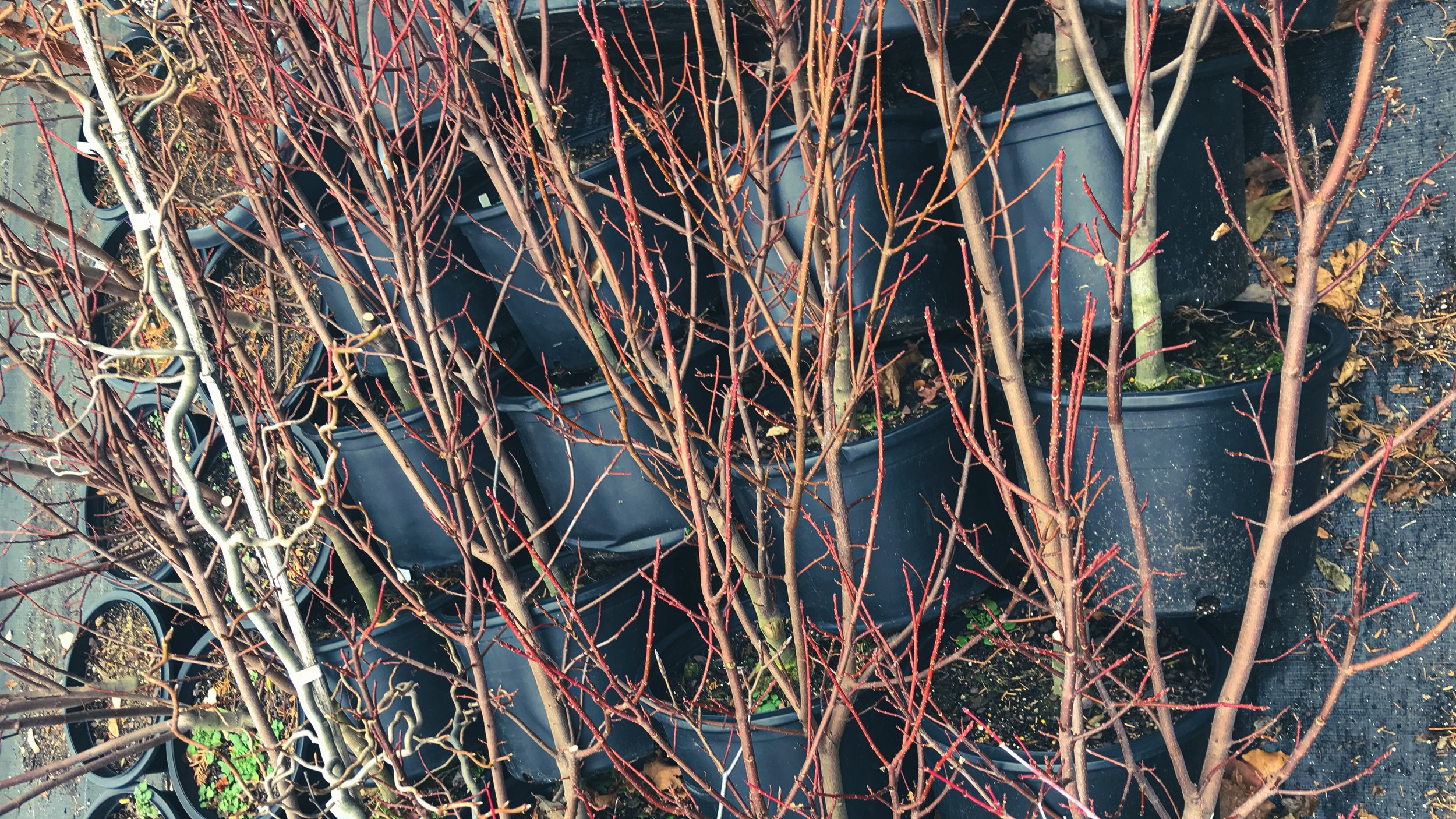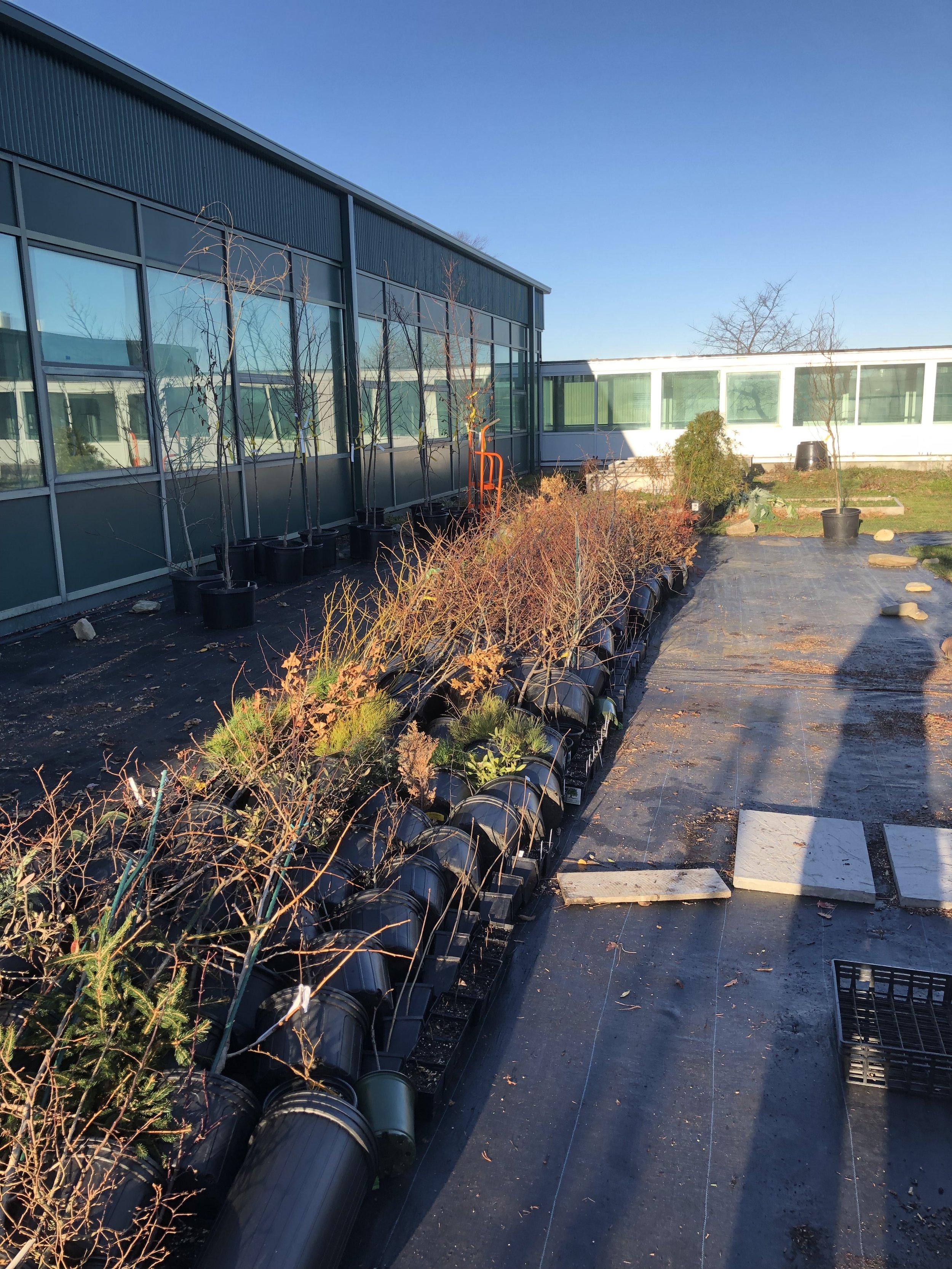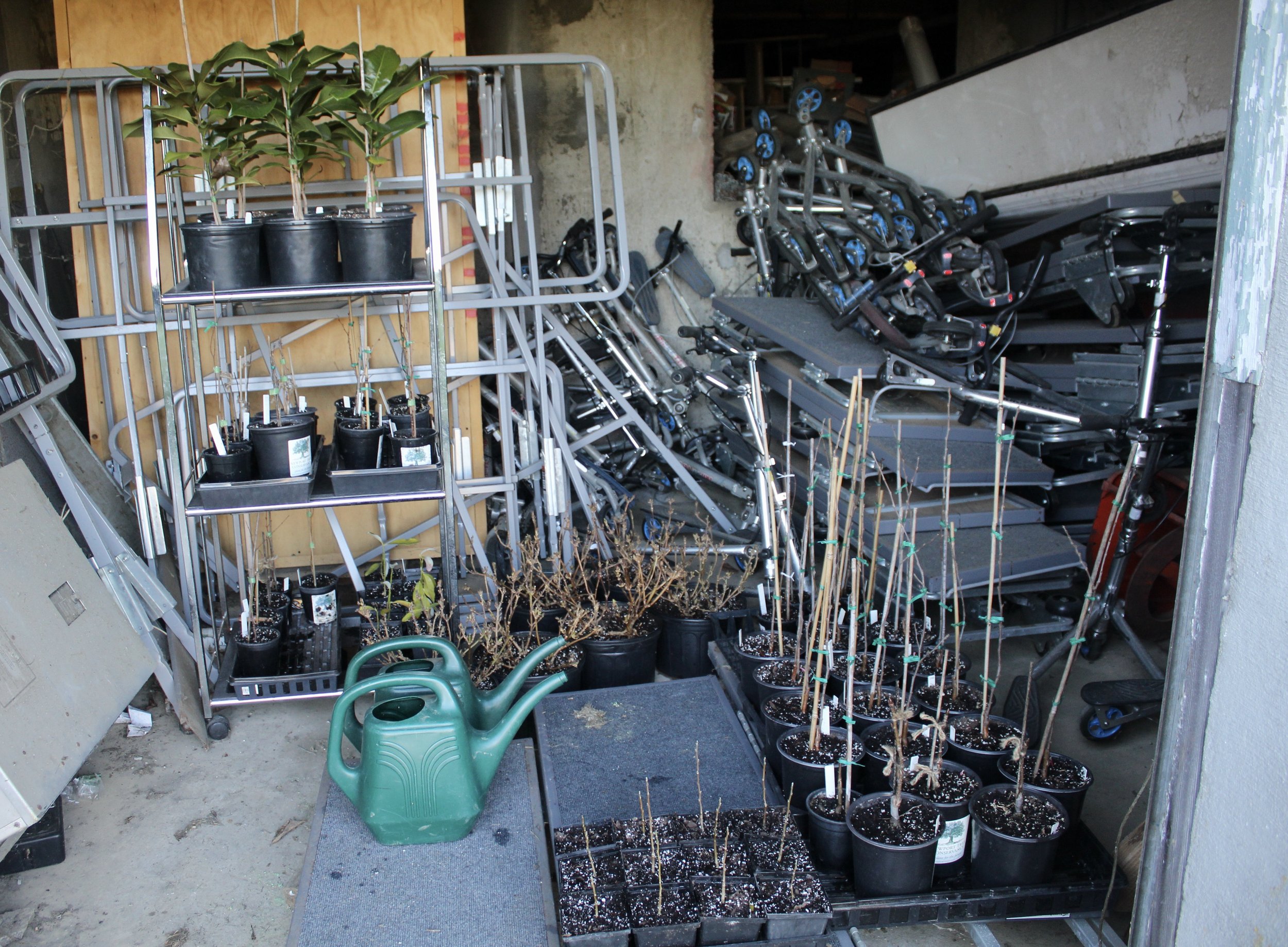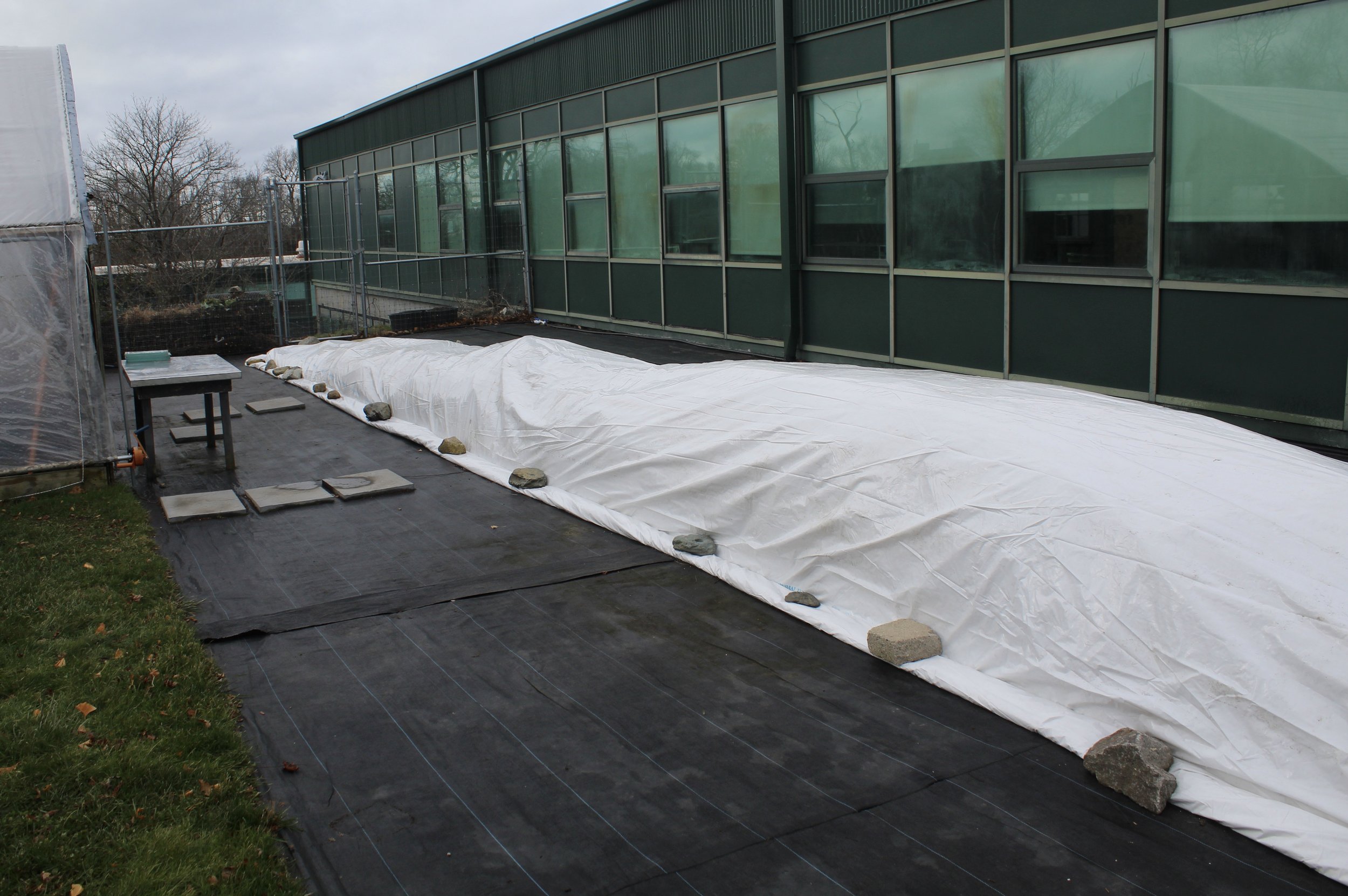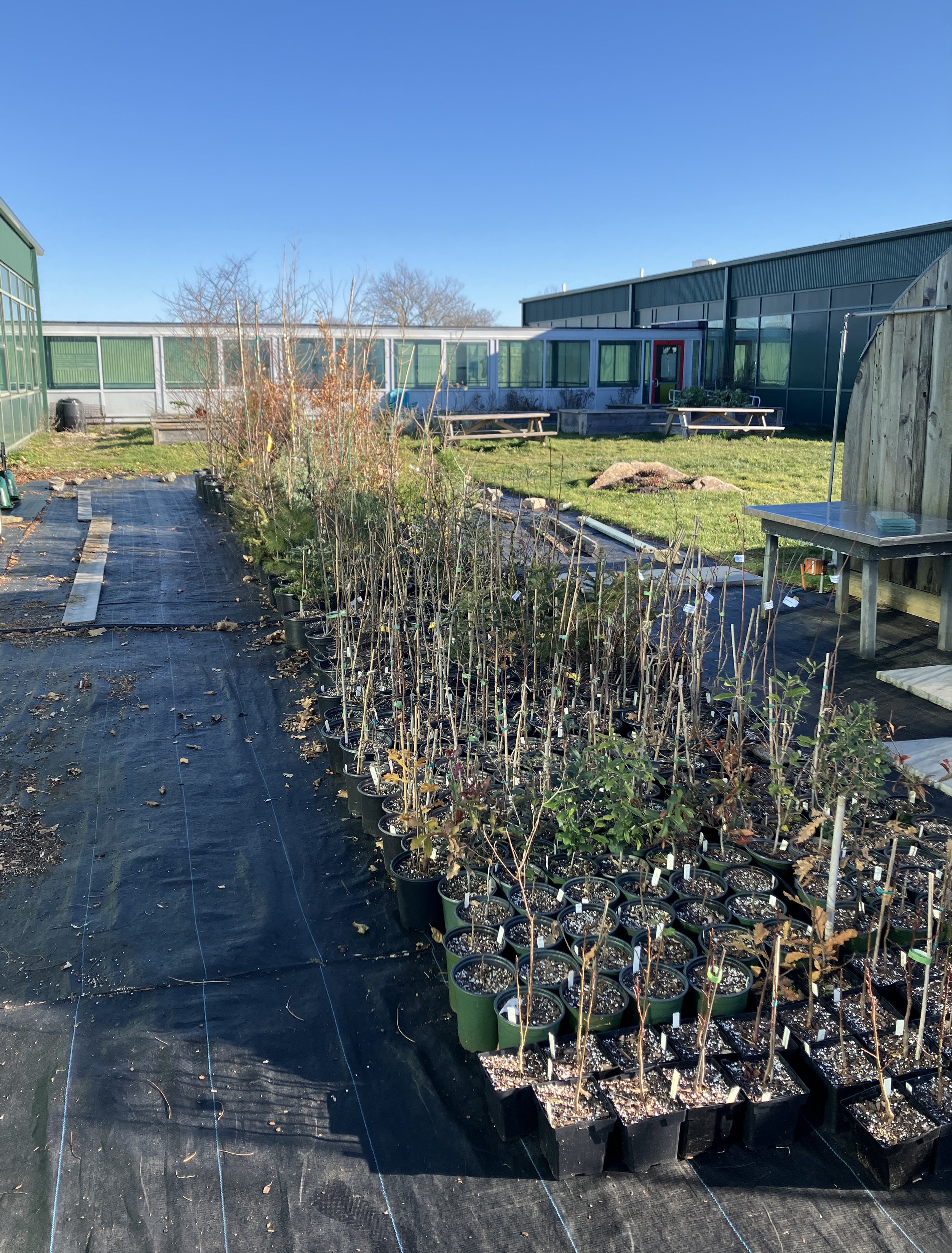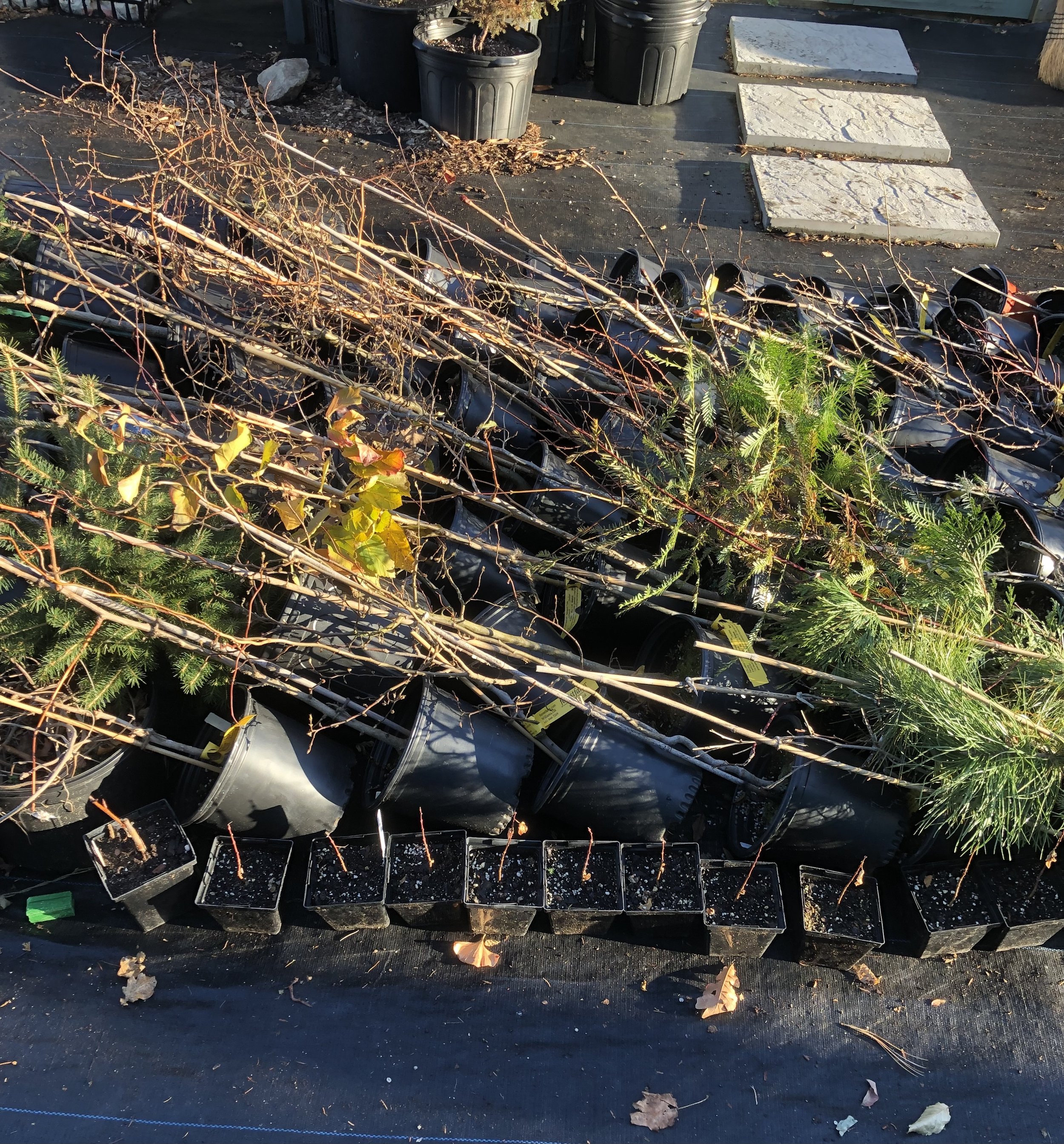Tree Hibernation at the Heritage Tree Center
As the end of the year approaches, and the windchill becomes difficult to bear, so too comes the annual routine of putting the trees to winter’s rest up at the Heritage Tree Center. The event symbolizes the end of the season and allows us to spend some time indoors to plan and research for the upcoming growing season. While not an overly complicated process, it is necessary to protect the plants properly to ensure a high rate of survival for our precious trees.
Timing is very important, as one would expect with any seasonal horticultural task. It’s crucial that plants must be allowed to go completely dormant before being stowed away. Containerized trees outside at our facility are exposed to frost all winter. The sides of our hoop house, which contain seedlings and first year grafts, are opened strategically to keep the inside temperature right around freezing during nightly lows. This controlled cold is crucial, as it allows deciduous plants to defoliate faster, thus shutting down. By early December, most of the deciduous plants have dropped their leaves and the evergreens turn their offseason shade. Some plants, such as oaks, hang on to their senesced foliage. If time allows, the dead leaves are removed.
With everything defoliated and dormant, the next step is to provide winter protection to ensure a high rate of survival. A winter cover -- 3 layers of blanket insulated with 2 layers of thick plastic, is the primary method of winter protection. All the trees are lined up according to size, and then laid down and tucked against each other. It takes a team to place the blankets on the stacked trees, totaling about 2 hours of work. It’s important to not forget the rodent protection, and to clean as much leaf litter as possible for it may harbor disease. The winter blanket will protect the trees from windchill and extreme cold, while also limiting the fluctuating temperature (freezing and thawing) that can damage the plant’s root system in the pot. Once nightly lows are consistently above freezing, usually in early April, the cover will be removed.
Cold rooms are utilized for some of the smaller plants, including one such room at Rogers High School. Heating from the school reaches the room, so temperatures rarely go below freezing, but don’t rise too high either. Plants are stacked on shelves, ideally best off the ground to keep away from pesky rodents. Watering must be checked, but dormant trees don’t dry out often when kept in this environment. The idea of the cold room is the same as the cover: limit temperature fluctuation and protect from extreme cold and damaging winds.
When the last tree is stored away, it is time to rest and recover from a busy growing season. But before you know it, the weather will be warming and the plants will emerge from their slumber to start growing once again.

